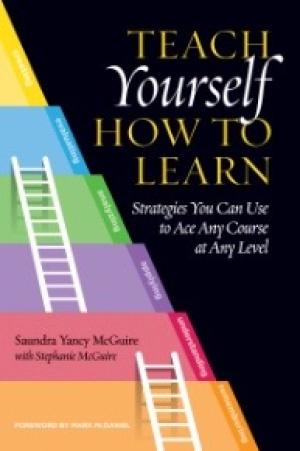Resources by F. Volker Greifenhagen

In 2016, former students of Judith A. Berling, renowned for her interreligious pedagogy, held a symposium in honour of her retirement from the Graduate Theological Union in Berkeley, California. This collection of essays is the result. Readers looking for an introduction to Berling’s pedagogy are advised to consult Berling’s seminal work, Understanding Other Religious Worlds: A Guide to Interreligious Education (Orbis, 2004) – affectionately referred to by her students as the “Purple Book.” In this volume, readers will find a wide-ranging set of contexts within which Berling’s students have creatively applied and extended Berling’s method, especially her five “threads” of theological learning. The seven essays are introduced by the editors and bookended by a preface and concluding reflections by Berling. In her reflections, Berling discusses the essays in an order that may be a more productive way of reading them: chapters 5 and 2 (issues in teaching today’s undergraduates); 7 and 4 (extending her pedagogy beyond the religion or theology classroom); 6 and 3 (attending to the social process of ‘othering’); and 8 (a meta-reflection on conceptual frames and assumptions). Preceding each essay, oddly for a book, is an abstract and list of key words. A remnant of the editing process seems to appear in the last paragraph on page 73. While very diverse, the essays all attend to the importance of negotiating differences and crossing boundaries. Examples from the specific pedagogical experiences of the writers abound; while most deal with theology and religion, particularly within an Asian context and usually from a Christian setting, some essays boldly address the non-religious and secular, or areas outside the discipline of religious studies such as health sciences. The writers also demonstrate Berling’s emphasis on student-centred and collaborative learning, and the importance of the teacher “getting out of the way” (see Berling’s influential essay by the same title in Teaching Theology and Religion 1.1 [1998] 31-35). A number of essays stand out. Emily Wu (chapter 4) shows that gathering oral histories can paradoxically silence voices, and advocates a stance of “cultural humility” rather than aspiring to “cultural competence.” Elizabeth Gordon (chapter 7) suggests “spirituality” and “wisdom sharing,” instead of “religion” and “interreligious dialog,” as mediating language to include the secular in articulating traditions of human flourishing. Joanne Doi (chapter 6) creatively demonstrates the pedagogical value of pilgrimage (in this case to the second World War site of a Japanese concentration camp in the United States). Berling underlines the urgency of the pedagogical task outlined in this book: “Understanding and negotiating difference, creating conversations and relationships across boundaries of difference, is one of the most important challenges in our diverse world” (130). Her students have bountifully indicated how they have each manifested this urgent task in their varied careers due to Berling’s profound influence. “Berling’s vocation, teaching, and scholarship have had a ripple effect in widening circles, indeed building the foundations of cross-cultural and intercultural understanding” (87).

The word “magic” appears several times in this book for students on how to succeed in college and university courses. Co-authored by Saundra McGuire, director emerita of the nationally acclaimed Center for Academic Success at Louisiana State University, and her daughter Stephanie McGuire, the volume is laced with stories of seemingly “magical” immediate and dramatic improvement in student performance after the application of the learning strategies described here in ten short chapters. The metacognitive learning strategies described draw on Bloom’s taxonomy and the neuroscience of learning, such as the work of Mark McDaniel (Make It Stick, 2014). They include strategies on reading textbooks, taking notes in class, reviewing, doing homework assignments, time management, and studying for and writing tests and exams. A handy little learning strategies inventory in Appendix C allows students to “predict” their grades based on the strategies they use. More important than these specific learning strategies for this reviewer are the sections of the book devoted to fostering in students a growth mindset that challenges the deterministic view that intelligence is innate (“I’m just not good at math”), and encourages students instead to believe that they can succeed and motivates them emotionally to do the effective work necessary for success. Monitoring self-talk and attributing results to one’s actions rather than external factors are powerful mental tools for improvement. In order to succeed, however, students need more than just a belief that they can do it and a set of effective strategies; they also need to know as specifically as possible what is expected of them. This is where this book addresses not just students but also instructors. Instructors put obstacles in the way of student success by not clearly articulating their expectations (and by creating unsupportive and discouraging classroom experiences and course structures). The book includes a very helpful section in chapter seven on how students should read a course syllabus. Notably, if a syllabus does not seem to clearly lay out expectations, students are encouraged to meet with the instructor for clarification. In fact, one of the strategies is to make regular use of instructor office hours. The book promises that if students use these strategies they can “ace” any course. Will students be disappointed? While the results may be magical, the method is not – hard work using effective strategies is required. Even reading the book may be a stretch for some students, although it is short and largely written in a very accessible style. It will also likely profit students in sciences and technology, where memorization is important, more than those in the humanities, such as religion and theology majors. The book does very little to address strategies for successful research and writing of papers, for instance, and the anecdotes of student success are drawn overwhelmingly from the sciences. However, much can be gained from this book by both students and instructors in all fields. My biggest take-away is the author’s insistence, “Now hear this: All students are capable of excelling” (65). This book shows how.